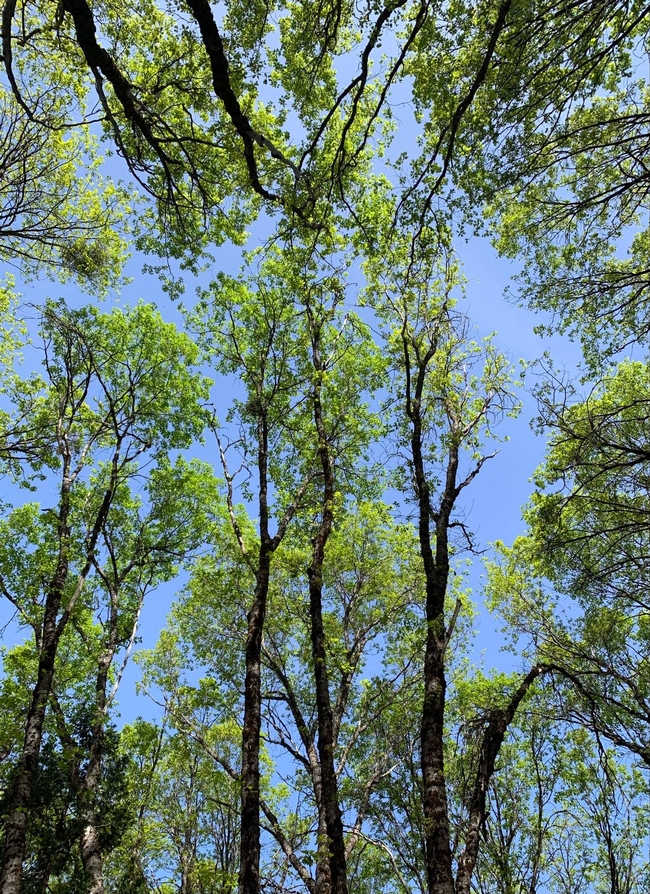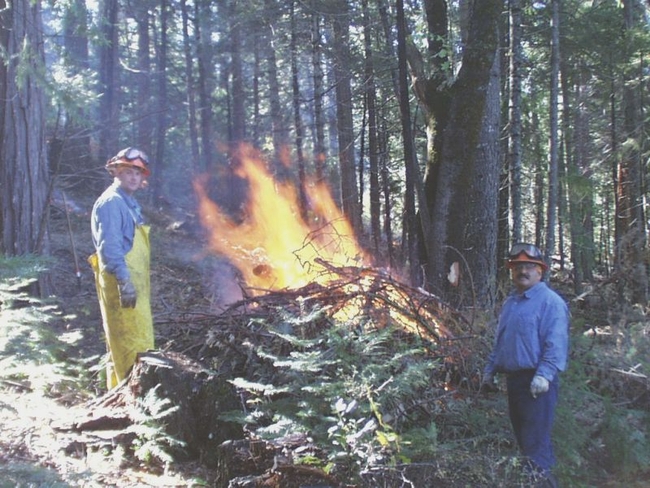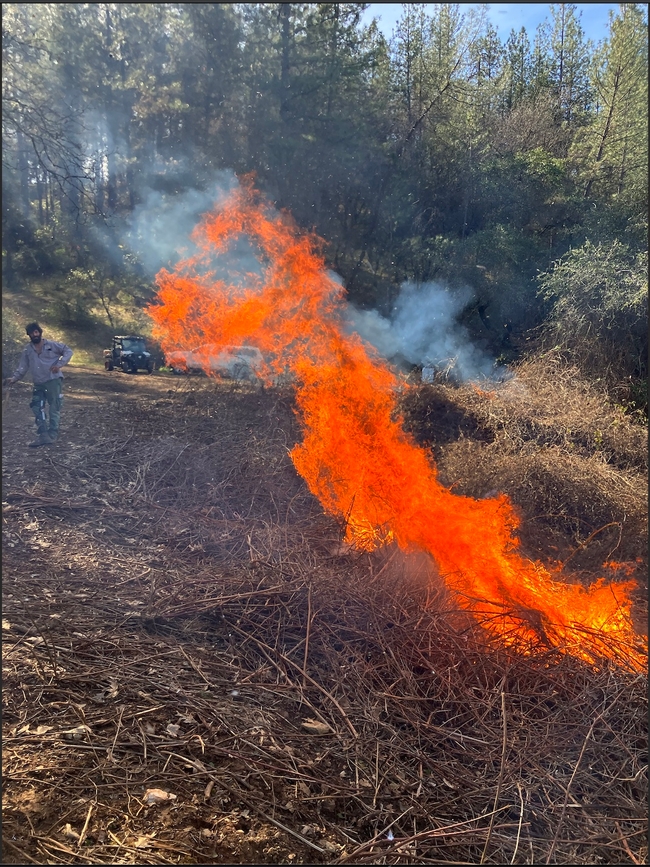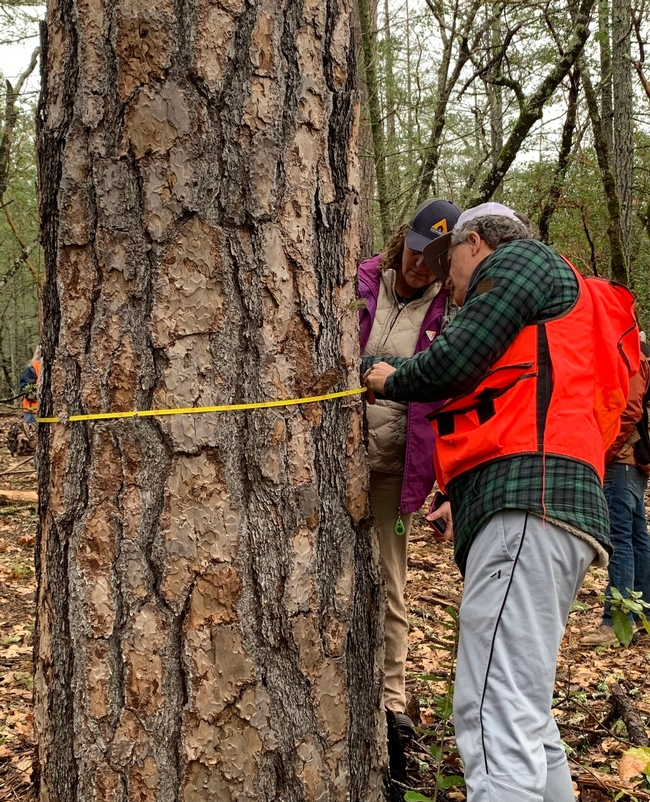Top 10 tools for new forest landowners
Earth Day 2023 celebrates the ways in which we can all invest in our planet, and forest landowners play a considerable role in this. Part of being a forest landowner is deciding where and when to invest your time, money and energy. To assist them, the UC Cooperative Extension Forest Research and Outreach team collaborated with four experienced landowners to highlight 10 tools a first-time forest landowner can invest in.
Listed below, these 10 tools expand past saws and rakes to include tools that educate landowners and support their management activities. We hope this compilation gives readers new to forest management a proper start.
1. Management Goals: Every tool a new forest landowner buys should help advance a management goal. Each of the four interviewees emphasized that understanding what you and your land need is the number-one priority to be investing time and effort into.
“That's my management goal: a healthy forest with as much biology as I can support. Keeping the big trees, letting fire in every once in a while…and correcting the problems we've caused in the past. The species we have here now, it's mostly white fir. People took out the Douglas Fir, the Sugar Pine and you have to do enough thinning to replant those species because they're not coming in that fast underneath the dense fir forest.”
-Brent, Nevada County
2. Pruning and Cross-cut saws: When completing thinning or clearing projects, every forest landowner has their go-to saws. Cross-cut saws are used for cutting down trees, whereas pruning saws cut away dead or diseased branches. Don't forget to look outside of the box for your tools, as one landowner told us about her preference for Japanese tools.
“My Japanese pruning saw… it cuts like butter! It can easily take down trees up to four inches in diameter. The Japanese-made tools, they're smoother and sharper.”
-Danica, Sonoma County
3. A McLeod was cited by each of the four landowners as a must-have tool in every forest landowner's tool kit. One side can be used as a hoe and the other side as a rake, making it useful for activities ranging from trail building to raking in brush for a pile burn.
“For pitching stuff in and raking things out [of a pile burn], you're going to need a McLeod. And if you want to clear a brush pile, it's heavy. And it [the McLeod] works really well for that.”
-Brent, Nevada County
4. Succession or legacy plan: Thinking about who will take care of your land after you is a key aspect of successful forest management. However, bequeathing land to a family member isn't the only option. You could also consider donating your land to a local tribe or to group like the Nature Conservancy.
“[Regarding legacy] On the forest that we manage, we have a conservation easement so it can't be developed. But it doesn't stop it from being logged…How do you conserve? How do you decide? You can let an organization manage it, but it might be in their interest to thin [the forest]. I'll do what I can - I'll set it up for you [the next generation] and hope that there's a shift in the future and we'll learn to steward our resources.”
-Brent, Nevada County
5. Weed Wrench: What to do when you encounter an unwanted plant? When restoring native plants and clearing unwanted invasives, some species are more difficult to uproot than others. If your garden shears aren't cutting it, reach for a weed wrench like the one here.
“I have a lot of bay laurel and there's a lot of saplings that come up and they resprout vigorously. You have to literally pull it out by the root…so I use a weed wrench, and that's been a really valuable tool for me. It's also good for Scotch Broom, anything that has a small diameter neck that you can clamp on to and leverage out.”
-Sacha, Humboldt County
6. Newsletters: Sometimes reading about what other landowners are doing can help you find inspiration for management activities. The Forestland Steward newsletter, which covers general forest management news and events, would be a good place for a new landowner to begin. Additionally, subscribing to newsletters that cater to your region and management goals is a simple way to find applicable management recommendations.
“I subscribe to a bunch of email newsletters, and those are constantly talking about…like, what upcoming events are going on? What are educational conferences going on? I'm constantly getting research articles, casual writings, webinars…For me, I'm personally interested in good fire, so I subscribe to a lot of resources that are focused on using fire as a land management tool.”
-Sacha, Humboldt County
7. Record keeping: Come tax season, you will thank yourself for investing time in keeping records of your management activities. If you find yourself receiving funding in the form of grants, conservation easements or other programs, having a trusted tax advisor or accountant should be a consideration. A close collaborator with the Forest Stewardship Program, Larry Camp, (Registered Professional Forester, forest landowner and retired IRS agent) notes, “Treating your forestland as a business or investment is an important step forward in efficiently managing your forest and can lead to incentives and deductions that will legally reduce your tax burden.”
8. Land History: For many forest landowners, learning about indigenous history is not only fascinating, but a thoughtful reminder of the original caretakers of California forestland. Investigate your land and delve into Traditional Ecological Knowledge (TEK), which may inspire new projects.
“When we're talking about land and access to land, I think it's always good to be thinking about tribal sovereignty, and what are actions we can do to support that. Historically, this [land] was an oak woodland…we're playing catch up over 150 years of fire suppression policies. I'm working towards oak woodland restoration, and part of that is that tie-in to responsibility to tribal access.”
-Sacha, Humboldt County
9. Management education resources: Though we at UCCE have our own Forest Stewardship Workshop series, there are often informational webinars and videos offered through regional organizations. The California Wildfire and Forest Resilience Task Force website has a list of educational resources for landowners, found here.
“I'm big on education, and when you're participating in that educational group, they [program participants] might throw out a different name, or a different agency you can use. It's really about being involved and taking up the suggestions that people give you.”
-Laura, Nevada County
10. Community: Getting connected with organizations like your local Resource Conservation District (RCD), Natural Resources Conservation Service (NRCS), CAL FIRE, or UC Cooperative Extension (UCCE) office can be a big help to new landowners. These organizations house experts such as Registered Professional Foresters (RPFs) who can provide technical assistance and assist in applying for permits or drafting a management plan. Devote time looking into region-specific organizations such as the Foothill Conservancy and My Sierra Woods that service multiple counties. Peer networks are a plus as well. Community ties were continuously cited by the forest landowners we spoke to as being a valuable resource.
“Try to figure out what organizations are around you that are doing stuff. Around here, there's the Mid-Klamath Watershed Council, and they'll have invasive plant removal days, and you can go and volunteer. Doing something like that, where you're hands-on and connecting with other people is what I'd suggest.”
-Sacha, Humboldt County
“My community…is definitely close knit, because it's tough! It's a lot of work. And, you know, if I'm renting a chipper and it's up at my property and someone else wants to use it, they can. It's very, very helpful to be close with your neighbors and learn from them.”
-Laura, Nevada County





